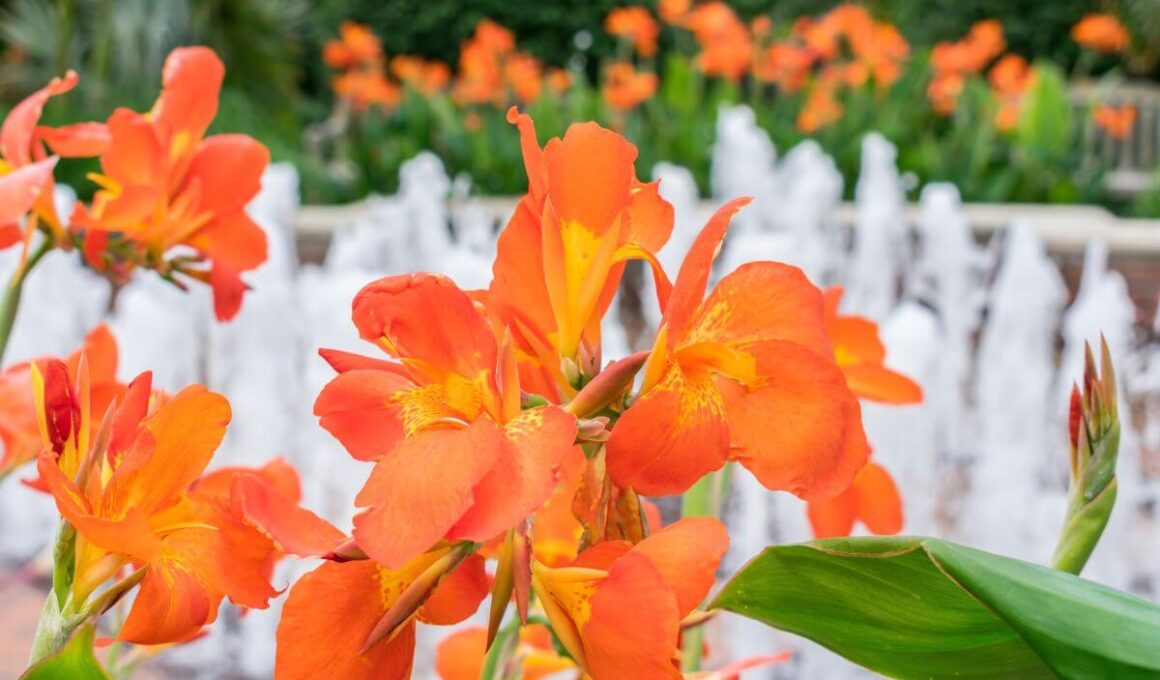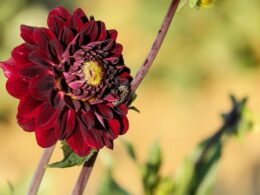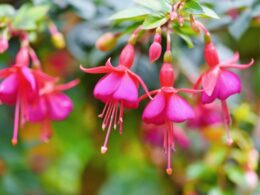Canna is a genus of perennial flowering plants, belonging to the Cannaceae family. There are 10 species of cannas, and some of them have edible starchy roots. The plant is native to tropical and subtropical regions of the New World – from South Carolina and Texas to northern Argentina. For that reason, proper canna plant care includes providing warmth and humidity.
Despite being called canna lilies, these plants aren’t true lilies. They’re related to ginger, banana, arrowroot, heliconia and the bird of paradise.
Canna plants can grow up to 6 feet tall (although some cultivars are limited to less than that), and their leaves are large and arrow-shaped. The flowers of canna plants are typically red, orange, or yellow, although some cultivars can have pink or white flowers. The blooms are borne on showy inflorescences, and the flowers can last up to two months.
Canna Plant Care – Soil Type and Fertilization
The canna plant does best in rich, well-drained soil with a pH between 6 and 7. If your soil is too alkaline or acidic, you can amend it with peat moss or compost.
Canna plants are heavy feeders, so they need to be fertilized monthly during the growing season. Use a balanced fertilizer (one that’s high in phosphorus) to encourage blooming. You can also use organic methods of canna plant care, such as composting or using manure tea.
Canna Plant Care – Watering Needs
Keep the soil moist – it should never be completely dry. Be careful not to overwater, though, as soggy soil leads to root rot. Usually, you’ll need to water your canna plant once or twice a week. After it flowers, canna plant care becomes easier – you don’t need to water as much.
Water canna plants at the base of the plant, rather than from above to avoid wetting the foliage. Otherwise, you may end up with fungal diseases, such as canna rust. With proper care, you shouldn’t encounter any problems.
How Much Light Canna Plants Need
Canna plants need full sun to bloom, although partial shade will help the flowers last longer in hot climates. If you’re not sure how much sun your canna plant is getting, check the leaves. If they’re pale green or yellow, it’s not getting enough sun. And if the leaves are scorched or brown, it’s getting too much sun.
Ideal Temperatures and Humidity Levels for Canna Plants
These plants need warm temperatures to thrive. They can grow in cooler climates, but the roots will be damaged if they’re exposed to freezing temperatures. The ideal temperature range for canna plants is 70-90 degrees Fahrenheit during the day and 60-70 degrees Fahrenheit at night.
Canna plants also prefer high humidity levels. If the air is too dry, the leaves can become brown and crispy. One way to increase humidity is to use a humidifier, or set the plant on a pebble tray. Remember, canna plant care means providing warmth and humidity!
Pruning and Deadheading Canna Plants
You can prune your canna plants to control their size and shape. Trim off any dead leaves or spent flowers to tidy up the plant. You can also cut canna plants back to the ground after they’ve flowered. This will encourage them to re-bloom (as long as you live in USDA hardiness zones 8-11).
In cooler climates, you can then take the rhizomes out of the ground, dry them, and store them indoors over winter. Put them in trays with slightly damp wood vermiculite or multipurpose compost. This is canna plant care 101 – it’s easy to do and will ensure your plants come back year after year.
How to Propagate Canna Plants
If you want to propagate your canna plant, you can do so by dividing the canna rhizomes (sometimes mistaken for bulbs). The best time to do it is in spring (after all danger of frost has passed) or fall. Here’s how to do it step by step:
- Wait until the canna plant has finished flowering, then dig up the entire plant.
- Gently shake off any excess soil and remove any growth 1 inch above the rhizome.
- Cut the rhizome into pieces with a sharp knife. Each piece should have at least one eye (the small bumps on the surface of the rhizome).
- If you’re doing this in spring, plant the new rhizomes right away in moist soil, at a depth of 4-6 inches.
- Water well and wait for new stalks to sprout.
Repotting Canna Plants
Plant canna in a big container (at least 16 inches in diameter) in the first place to accommodate their roots. If you notice them becoming pot-bound, you can repot them as needed.
When you do repot, make sure to use fresh potting soil and a clean container. Gently loosen the roots before placing the canna plant in its new home. Water well and wait for new growth to appear before fertilizing.
Common Problems with Canna Plants
One of the most common problems with canna plants is rust – brown or yellow spots on the leaves. This fungal disease thrives in humid conditions, so make sure to keep the foliage from getting wet. If you notice canna rust, remove any affected leaves and dispose of them immediately. You can also use a fungicide to prevent the disease from spreading.
Another problem you might encounter is canna yellow streak virus. Symptoms include yellow streaks on the leaves, stunted growth, and deformed flowers. Unfortunately, there’s no cure for canna yellow streak virus. The best course of action is to remove any affected leaves and destroy them.
Enjoy Beautiful Canna Flowers Throughout the Summer
With proper canna plant care, you can enjoy beautiful canna flowers all summer long. These vibrant blooms add color and life to any garden or patio. Just remember to give them warmth, humidity, and plenty of space to grow!
Have you tried growing canna plants? Share your tips in the comments below!



















